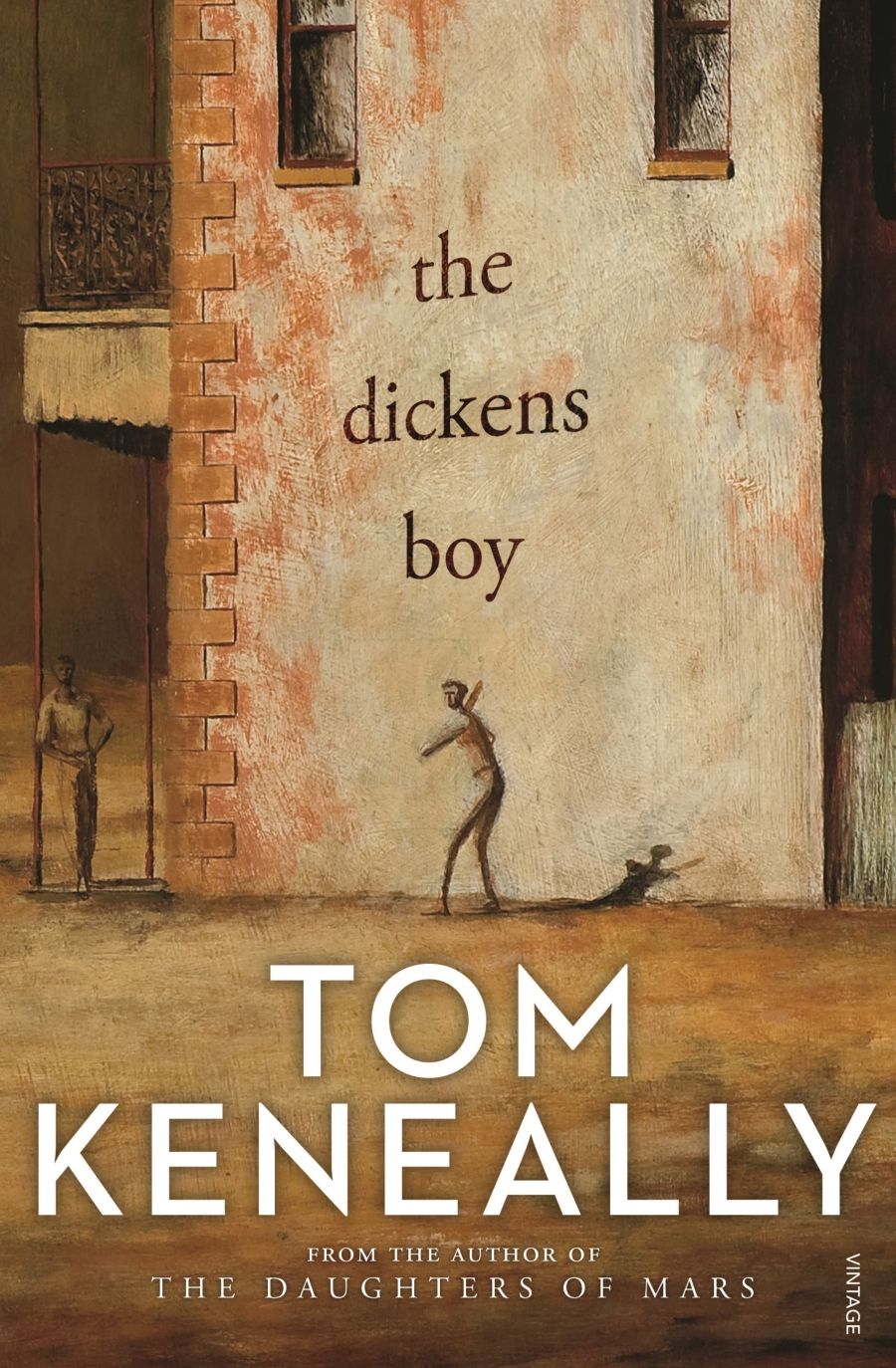
- Free Article: No
- Contents Category: Fiction
- Review Article: Yes
- Online Only: No
- Custom Highlight Text:
‘When a writer is born into a family, the family is finished.’ That gunshot of a quotation comes from the Polish poet Czesław Miłosz. I suspect he means writers are traitors to biology – they have higher allegiances than blood ties. Art is their true spouse; their works are the favoured first-born.
- Grid Image (300px * 250px):

- Book 1 Title: The Dickens Boy
- Book 1 Biblio: Vintage, $32.99 pb, 400 pp
Thomas Keneally’s latest novel – miraculously, his thirty-fourth work of full-length fiction – concerns the unlucky last of Dickens’s brood. Born in 1852, Edward Bulwer Lytton Dickens lacked the divine spark that made his father the most famous and beloved author of the nineteenth century. He showed little scholarly aptitude. Nor did he possess, in his father’s mind at least, application in general. Dickens père pulled Edward from his boarding school early and sent him to Cirencester’s Royal Agricultural College: then, as now, a gentle educational off-ramp for the well-born and dim. Aged sixteen, Edward suffered definitive exile from the family hearth at Gads Hill. He was sent to Australia, on the heels of his older brother Alfred, to work on a large pastoral concern as a sort of proto-jackeroo: the idea being that he would learn the ropes and eventually become a colonial man of means.
 Tom Keneally (photograph via Penguin Random House)
Tom Keneally (photograph via Penguin Random House)
Keneally’s aim in attending to a youth so unprepossessing is both generous – he wants to recuperate Edward to some degree by telling his (imagined) side of the story – and a subtle rebuke to Charles Dickens, a charming autocrat whose endlessly fertile inventiveness is shown to have significant gaps.
That personal critique shades into the political. Tender and wry as the novel is, The Dickens Boy has a tough-minded postcolonial core. By taking Edward’s side against his famous parent, Keneally also makes the case for nineteenth-century Australia as more than a dumping ground for those who either couldn’t hack it at the heart of empire or had rendered themselves morally unsuitable to remain within it – a patronising and diminishing idea of antipodean experience that Dickens, more than any author, helped entrench.
The narrative opens at Keneally’s traditional canter, joining Edward – or ‘Plorn’ as his father indelibly nicknamed his youngest – on his voyage from Britain to Melbourne. After a brief, unfortunate posting to a property where the manager makes vicious sport of his parents’ very public separation, the boy’s second attempt at employment is more successful. This time he is sent to a remote station called Momba, near Wilcannia in the north-west of New South Wales, where two brothers named Bonney have established a considerable pastoral lease. (The Bonneys existed in reality and did host Edward Dickens for several years in the late 1860s and early 1870s.)
A property so large and so distant from colonial centres, positioned close to both the South Australian and Queensland borders, had to practise self-government out of necessity. Luckily for the local Paakantji people, whose land this was, Frederick Bonney cut a liberal-minded if paternalistic figure, fascinated by and respectful of Indigenous culture, so much so that he became an enthusiastic amateur ethnographer.
Much of the pleasure of the novel arises from the shock of strangeness we encounter alongside Edward. He is a modest, earnest young man, but one gentle and attentive to the oddities around him. What he discovers is a world at once alien but weirdly familiar, in which flora and fauna have no correspondence with the world from which he has come and yet which remains filled with men (and it is mostly men) who know his father’s works well enough to quote them adoringly and at length.
For contemporary readers, there is a further frisson in seeing black and white worlds operating in relative peace and comity; and surprise, too, that the old idea of a colonial monoculture we were raised on was in fact cosmopolitan. Irish ex-convicts and heirs to English peerages share boundary-riding jobs. French women who love Victor Hugo travel the same bush tracks as Afghan cameleers. Roman Catholic monks wander with bands of desert people.
Keneally’s other life as a historian informs every page of the novel; his is an antique footnote swelled up to life-size, complete with gentlemen bushrangers, early Australian cricketing obsessions, absconding lovers, and cruelly racist mounted police. Yet the plot feels knocked together – a plywood stage on which the travelling melodrama runs – while the real action takes place elsewhere. This is where The Dickens Boy shades from jolly Bildungsroman into something closer to tragedy. We know that Edward died penniless at the age of forty-nine, and though this sad end stands outside the novel’s frame, the reasons for his fall from determined, hard-working youth to broken man are clearly signposted.
What Keneally aims to do here – in the spirit of fictions such as Peter Carey’s Jack Maggs and Richard Flanagan’s Wanting – is to locate and fill in those failures of the imagination under which a novelist such as Dickens laboured. For a Victorian culture inculcated with the inevitable rightness of empire, which regarded a few pious acts of charity as sufficient corrective to naked economic exploitation and systemic racism, British colonies were empty spaces onto which the imperial imaginary might send its landfill and project its certitudes.
What Keneally’s novel reveals is a very different place, one where a unique local culture and society – more egalitarian, more accepting of difference – was checked and overlaid by old systems, inherited hierarchies, and the inevitable atrocities of the frontier.


Comments powered by CComment